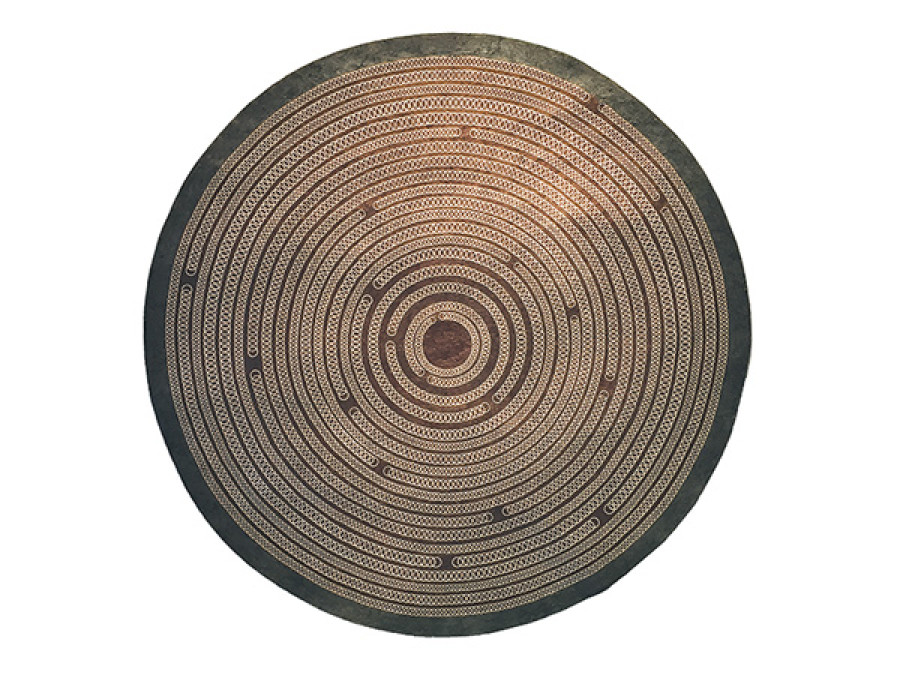Entertainment
Phantalassa: An Artist’s Journey
Not all art exhibitions are easy viewing. Most are in fact hit or miss depending on one’s state of mind.
Sophia Pande
The exhibition itself is a multimedia experience, consisting of fine geometric drawings that are somewhat reminiscent of crop circles and/or archetypal-seeming abstractions of architectural drawings. There is also a six-minute video titled Forma Poema, some photographs that Ledezma took while in Timor Leste, a sound installation, and in this case, I will include the artist’s manifesto, which is in the form of a poem, as part of the exhibition.
The artist’s statement consists of two lines just before the poem:
Phantalassa refers to the evolutionary state, change or alteration of matter, of all organic status and therefore man.
It is the creation
of an object as a religious fetish, a system of transformation.
So, what exactly does all of this mean, and, how did we get to this exhibition from inception to finish? Well, to really understand it, I am of the opinion that one must speak to the artist himself to unpack the density of his personal mythology, which is inherent in the introductory literature.
Sitting down with Ledezma was fairly easy for me; I am an art historian by training (not trying to be lofty by that statement), meaning only that I am perhaps more used to (and more patient) than most when it comes to deciphering impenetrable artist’s statements (such as the above). Additionally, I was genuinely curious, wanting to understand the thinking behind the subliminal, very fine drawings (to me the most striking aspect of the exhibition).
It was clear to me, even just from the work, that the artist is a very skilled draughtsman. What was less clear before our conversation was whether or not this young, Mexican-born artist was capable of explaining the esoterica that the art was seemingly born from.
As explicated to me, Ledezma was living and working in Berlin as an artist when a number of things began to happen. He began to feel empty as an artist, skilled enough to make seemingly “good” art but wary of the superficial nature of what he and those around him were making. He also started having a recurring dream. That dream, upon research, seemed to evoke images of Asia, the Indian subcontinent in particular, and so the artist made a decision to apply for a grant to travel to the places he was drawn to.
For those who are already screaming “Orientalism” in their heads, do stop; it is not fair to accuse people of romanticising other cultures and religions at the drop of a hat. Even while the term was coined for a reason, to crystallise the notion that the West can have a superior attitude towards an underdeveloped but exotic East, or the “Orient”, I
balk when it comes to accusing those who feel a genuine affinity for another culture and choose to immerse themselves intellectually, producing works, that, at the risk of sounding naïve, come from sincere, focused, diligent endeavour.
Apologising for the above aside, I will say that I was convinced by Ledezma’s personal mythology, which derives from the landscape of the Chihuahua desert, where he grew up, which connoted an emptiness and engagement with nature, just as his move to Asia (to Bali and Timor Leste)
and his being surrounded by the ocean spawned
his interest in transubstantiation, that is the changing of form.
Phantalassa the exhibition derives its name from “Panthalassa” or the Panthalassic Ocean that surrounded Pangaea—the late Paleozoic supercontinent that broke apart to gradually form the oceans and continents as we know them today. The exhibition and the works within it are therefore aspects of the artist’s evolution as he moves through time and space, learning new things and manifesting them in his art through his skin.
Conceptual art like this is hard to digest, sometimes not even worth the energy it takes. The lesson that both viewers and other artists can take from Alain Ledezma is the notion that personal mythologies derived from inner journeys can precipitate powerful art that justifies close looking and further research.
If you are still interested, Ledezma will be speaking about his work at the gallery the day after this column is published—it may be worthwhile to dig deeper.




 5.4°C Kathmandu
5.4°C Kathmandu








%20(1).jpg&w=300&height=200)

